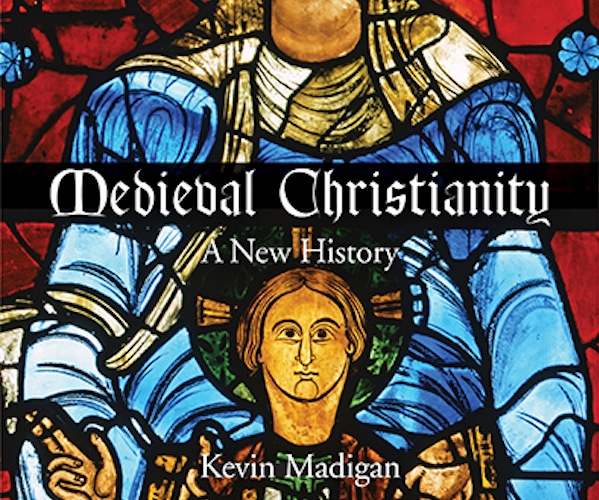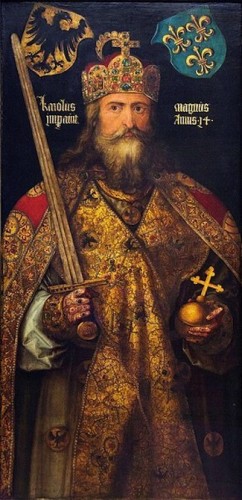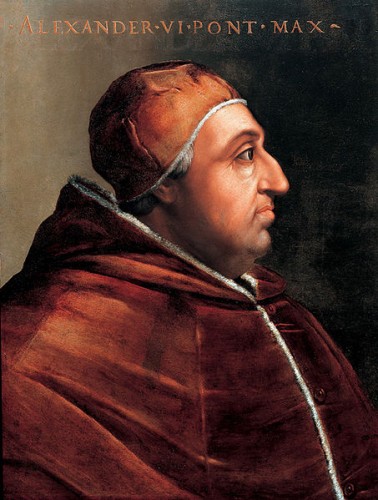Book Review: “Medieval Christianity” — All Too Human
Harvard Divinity School professor Kevin Madigan’s scholarly but compelling exposition of the evolution of the church will spark introspection among practicing Christians. For non-believers it is a lesson in how systems of belief can shape people and societies.
Medieval Christianity, A New History, by Kevin Madigan. Yale University Press, 487 pages. $40.00.

By Thomas Filbin
Histories of vast stretches of time and complex subjects run the risk of becoming lists; in the attempt to be comprehensive they often lack a narrative thread. Happily this is not the case with Kevin Madigan’s concentrated study of Christianity from 150 to 1500 A.D. This is the period from which we have much documentary evidence, such as scriptures, scrolls, decrees, and fragments, which can be analyzed to illuminate Christian belief and behavior in the religion’s infancy and adolescence. Madigan, the Winn Professor of Ecclesiastical History at Harvard Divinity School, weaves a story that shows how the church in this period eventually became “…the institutional framework within which one lived out one’s life.” Every daily event from birth to death was marked by doctrines, devotions, and practices that were compulsory and accepted as divinely ordained. So fixed and intractable was this way of living that it is a great wonder how contrary historical movements, such as the Reformation and the Enlightenment, were ever able to shake it.
The early period of Christianity was marked by the gradual formation of theology. Madigan points out that, contrary to what most people think who have a general schooling in history, orthodoxy was not universal, with heterodoxies coming along centuries later. They existed side by side from the beginning. The question as to the nature of Jesus Christ, for example, and whether he was God, man, or somehow both, troubled and divided early Christians. Some said Jesus was God appearing as a man, while others maintained he was true God and true man. The resulting linguistic gyrations generated an enormous amount of muddle: the Arians, Christians who believed in a non-Trinitarian God (Jesus was created by God the Father), flourished until the Council of Nicaea addressed the matter definitively with a creed. Points of view adverse to Roman beliefs were usually dubbed as heresies, but that didn’t stop them from popping up throughout the Middle Ages, championed by sects like the Cathars and Waldenensians. Instead of accepting different opinions as theories, the medieval church assumed the role of the keeper and enforcer of true beliefs.
The growth of the religion beyond Palestine is also interesting; first it moved to the Middle East and Asia Minor; by 500-1000 A.D. came the conversion of the Franks, Britons, Celts, and Scandinavians. Europe by 1200 A.D. was almost universally Christian, either Roman Catholic or Eastern Orthodox.

Charlemagne by Albrecht Durer.
Constantine and his successors ended paganism as the official religion of the empire. By the time of Charlemagne, Christianity had been culturally and socially integrated into the lives of all his subjects. He promoted schools, churches, and rituals which joined together civil and religious life. The consequent politicization of the church invited mischief. The church blessed and legitimized the ruler, who in turn mandated the church as the official and sole form of religion. Popes wielded temporal authority, too, being almost kings of their own domains, and had the ability to release subjects from allegiance to a king who had rebelled against church authority, even to the point of forcing the Holy Roman Emperor Henry IV to wait in the snow at Canossa for three days seeking forgiveness from Pope Gregory VII.
By the later Middle Ages, power and politics led to all manner of abuses, including simony (the selling of church offices), nepotism, and corruption. The dark periods of the papacy, first at Avignon, and then back at Rome with such infamous reprobates as Rodrigo Borgia, Pope Alexander VI, tarnished the reputation of clerics generally. The daily practice of religion became so encrusted with devotions, relics, medals, prayers, pilgrimages, and superstitions, as well as fees and tithes, that it bore little resemblance to the life led by early communities of Christians who lived simply and prayed to be worthy of Jesus. Madigan’s informative chapter “Late-Medieval Piety and Its Problems” is particularly incisive. “It has been sometimes suggested that the medieval church was treasured above all as an intercessor for the dead,” he observes. Christians were forever needing masses said and indulgences granted for the remission of sins, all of which involved priests and the paying of stipends. The faithful were kept in a state of perpetual anxiety, dependent on these rituals to quiet fears of damnation. Madigan concludes that “while some late-medieval Christians found deep satisfaction in the pious practices, others felt oppressed by the medieval pastoral theology of the period. No volume of confessions, prayers, or practices could assure them of salvation.”
This tight connection between a highly ritualized religion and God — in which peace of mind could only be obtained through the church, its priests, and its sacraments — surely created fertile ground for reformers determined to sow the seeds of doubt after 1500 A.D. Instead of needing intermediaries to call upon the love and mercy of God, Protestantism swept religiosity aside in favor of direct relations with a deity based upon faith and guidance from the scriptures.
On the one hand, one wonders why it took so long for the likes of Luther, Calvin, and Knox to indict the established church for having left the gravitational pull of the gospels, repressing their message of redemption and salvation. But it is also impressive how these reformers were able to go up against the vast power of states allied with the church. But that, as they say, is another story.

Pope Alexander VI by Cristofano dell’Altissimo.
The book discusses the abominable treatment of the Jews by Christians over the centuries, much of the injustice receiving the tacit or explicit approval of the church. The infamous blood libel is the most horrifying; the charge that Jews killed Christian children to use their blood in their rituals. Jews were castigated as usurers, poisoners of wells, and later as the ones who had caused the Black Plague: the scapegoating gave Christians the license to burn, butcher, and drive out the non-believers, confiscating their property under the cover of piety.
Madigan’s scholarly but compelling exposition of the evolution of the church will spark introspection among practicing Christians, while for non-believers the volume paints a portrait of how systems of belief can shape people and societies. There is an old adage that, under ordinary circumstances, good people will perform good acts, and bad people bad ones, but to get good people to do bad things, you need religion. Jihads, persecutions, and inquisitions reoccur with sad regularity throughout history, though the church can boast many positive accomplishments, including the work of priests, nuns, brothers, and lay volunteers in establishing and maintaining hospitals, schools, and orphanages. Over its twenty centuries Christianity has run the largest human services operation in history.
Historians often seem to be engaged in a kind of scorekeeping, weighing positives and negatives in the tacit belief that something can be called good if it is mostly good, albeit with failings. Perhaps the real bottom line of Christian history is that any earthly institution claiming a divine origin for its mission will always, at the end of the day, turn out be human, all too human.
Thomas Filbin is a freelance writer whose reviews have appeared in The New York Times Book Review, Boston Sunday Globe, and The Hudson Review.
